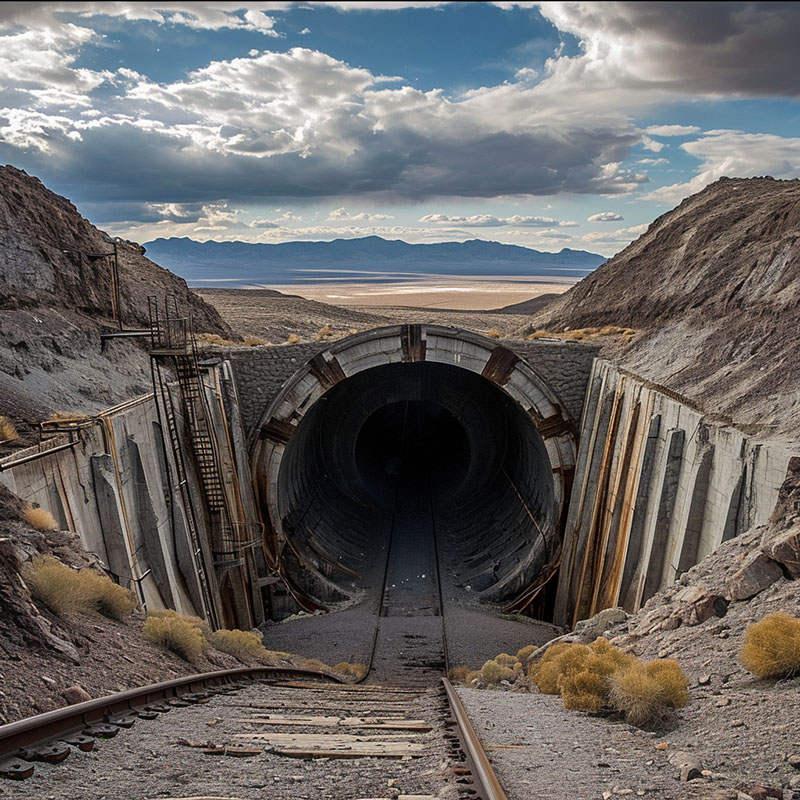
A volcanic eruption might cause greater damage than previously thought to the proposed high-level nuclear waste storage facility beneath Yucca Mountain, Nevada. This, according to research presented by Andrew Woods of the BP Institute, University of Cambridge, United Kingdom, and colleagues this month in the journal, Geophysical Research Letters, published by the American Geophysical Union.
Yucca Mountain is located within a long-lived volcanic field. Risk assessments have suggested that the probability of volcanic activity occurring during the 10,000-year compliance period of the repository is around 1 in 1,000 to 1 in 10,000. However, because such activity could have a significant impact on public health and safety, Woods and his colleagues developed a physical model to understand some of the risks associated with volcanic disruption of the repository.
Eruptions from volcanoes located within 12 miles [20 kilometers] of the proposed repository have tended to produce small volumes of magma, or molten rock. However, the content of volcanic gases in the magma means that the eruptions have been quite explosive.
The model developed by Woods and others envisions that magma rising from below Yucca Mountain would form a narrow body of molten rock called a dike. The dike is hypothesized to cut through several of the repository drifts and be diverted into them. Upon entering a drift, the high gas content of the magma would cause it to expand rapidly.
Based on their models, the scientists found that magma in the drifts could reach speeds on the order of 200-600 mph [100-300 m/s], filling parts of the repository with magma within a matter of hours after the initial eruption. Flowing magma might displace canisters holding radioactive waste. Additionally, intense heat associated with the magma would be expected to cause extensive damage to the containers. The results suggest that a greater number of canisters could be affected than previously estimated. The researchers also suggest that the pressure associated with the magma could be sufficient to open new and existing fractures at Yucca Mountain, providing a conduit for material to reach the surface.
Woods and his colleagues note that although their models are simplified relative to the complex interactions that would occur in the repository during a volcanic eruption, the models are consistent with understanding of these types of eruptions. Therefore, while previous estimates suggest that the probability of a volcanic event may be very low, potentially significant impacts on the site during such an event warrants further research to fully assess the risk.